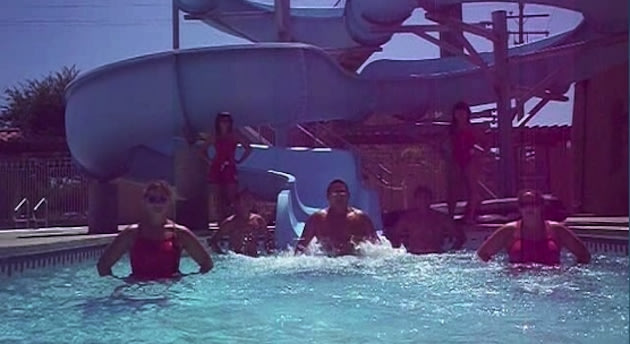ScienceDaily (Sep. 18, 2012) ? Loyola University Medical Center is studying whether a new form of non-invasive magnetic therapy can help people who suffer debilitating tinnitus (ringing in the ears).
The therapy, transcranial magnetic stimulation (TMS), sends short pulses of magnetic fields to the brain. TMS has been approved since 2009 for patients who have major depression and have failed at least one antidepressant.
The Loyola study will include patients who suffer from both depression and tinnitus. Recent studies have found that about 12 percent of people with chronic tinnitus also suffer depression and anxiety -- a rate three times higher than that of the general population.
Tinnitus is the perception of sound in one or both ears when there is no external source. It can include ringing, hissing, roaring, whistling, chirping or clicking. About 50 million Americans have at least some tinnitus; 16 million seek medical attention and about 2 million are seriously debilitated, according to the American Tinnitus Association. There is no cure.
The perception of phantom sounds can be more pronounced in people who are depressed. Moreover, antidepressant medications can cause tinnitus occasionally, said Dr. Murali Rao, principal investigator of Loyola's TMS tinnitus study.
Several earlier studies have found that TMS can benefit tinnitus patients. Loyola's study is the first to examine patients who suffer from both tinnitus and depression. "The combination of these two conditions can be extremely debilitating," Rao said.
During TMS treatment, the patient reclines in a comfortable padded chair. A magnetic coil, placed next to the left side of the head, sends short pulses of magnetic fields to the surface of the brain. This produces currents that stimulate brain cells. The currents, in turn, affect mood-regulatory circuits deeper in the brain. The resulting changes in the brain appear to be beneficial to patients who suffer depression. Each treatment lasts 35 to 40 minutes.
The study will enroll 10 to 15 patients. Each patient will receive five treatments a week for four to six weeks, for a total of 20 to 30 treatments. Each patient will be evaluated by a physician three times during the treatment course, or more frequently if the doctor deems necessary.
The treatments do not require anesthesia or sedation. Afterward, a patient can immediately resume normal activities, including driving. Studies have found that patients do not experience memory loss or seizures. Side effects include mild headache or tingling in the scalp, which can be treated with Tylenol.
Rao is chair of the Department of Psychiatry and Behavioral Neurosciences of Loyola University Chicago Stritch School of Medicine. His co-investigator in the study is Sam Marzo, MD, medical director of Loyola's Balance and Hearing Center. Other investigators are Matthew Niedzwiecki, MD, a psychiatry resident; and James Sinacore, PhD, a statistician.
Share this story on Facebook, Twitter, and Google:
Other social bookmarking and sharing tools:
Story Source:
The above story is reprinted from materials provided by Loyola University Health System, via Newswise.
Note: Materials may be edited for content and length. For further information, please contact the source cited above.
Note: If no author is given, the source is cited instead.
Disclaimer: This article is not intended to provide medical advice, diagnosis or treatment. Views expressed here do not necessarily reflect those of ScienceDaily or its staff.
dodgers sf giants rachel maddow gia la riots new jersey devils torn acl

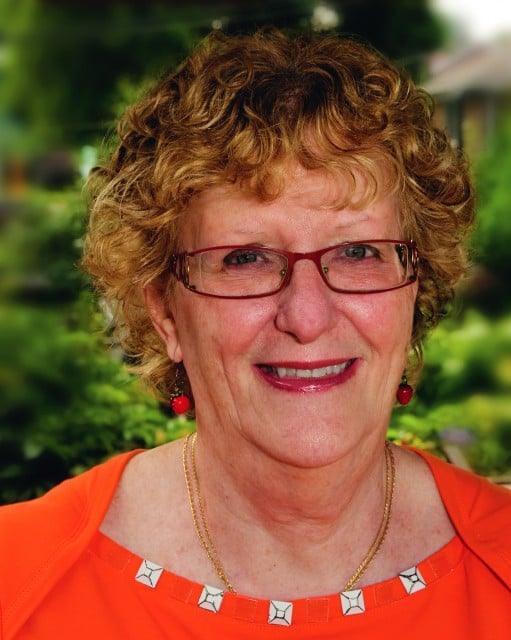


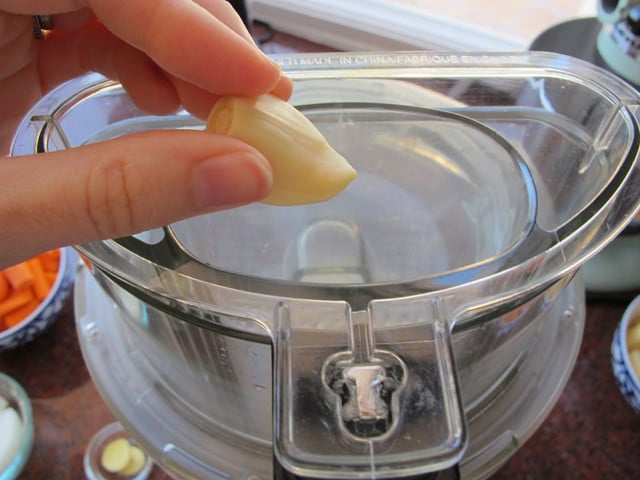 Process until minced. (Use mini-bowl and mini-blade if available) Set aside.
Process until minced. (Use mini-bowl and mini-blade if available) Set aside.  Process onion and celery with quick on-off pulses, until coarsely chopped.
Process onion and celery with quick on-off pulses, until coarsely chopped.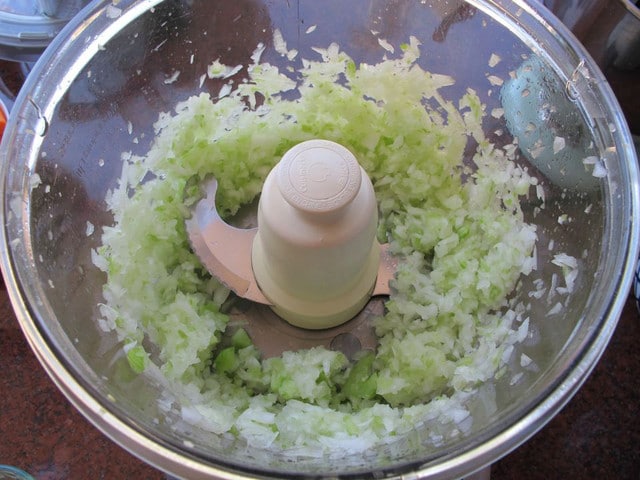 Heat oil in large soup pot. Saute onion and celery for 6 or 7 minutes, until tender, stirring occasionally. Add a little water if the vegetables begin to stick.
Heat oil in large soup pot. Saute onion and celery for 6 or 7 minutes, until tender, stirring occasionally. Add a little water if the vegetables begin to stick.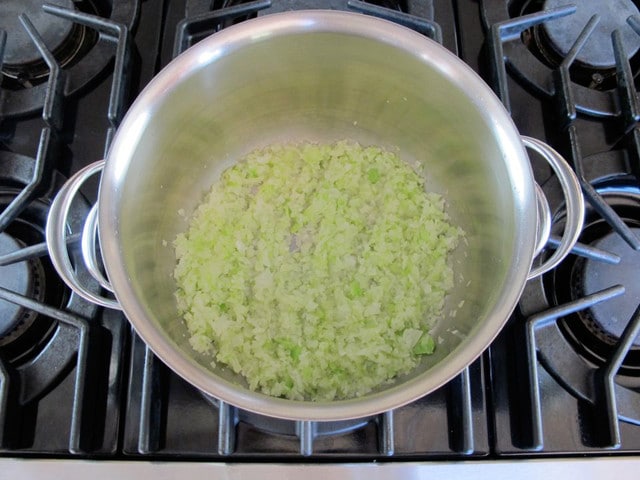 Process carrots with quick on/off pulses, until coarsely chopped.
Process carrots with quick on/off pulses, until coarsely chopped. 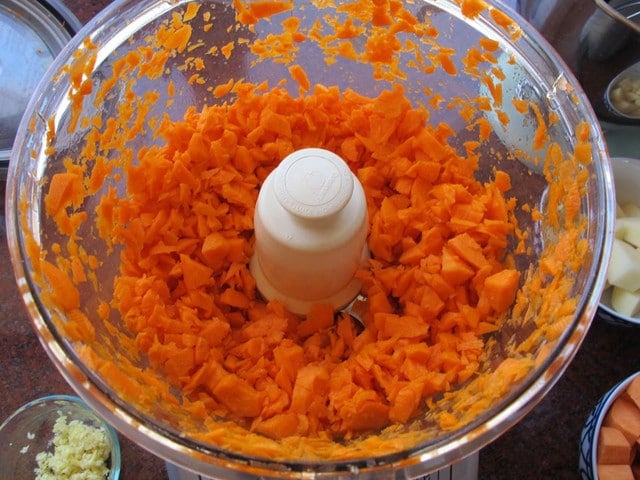 Add to soup pot along with reserved garlic and ginger; cook 2 minutes longer.
Add to soup pot along with reserved garlic and ginger; cook 2 minutes longer. 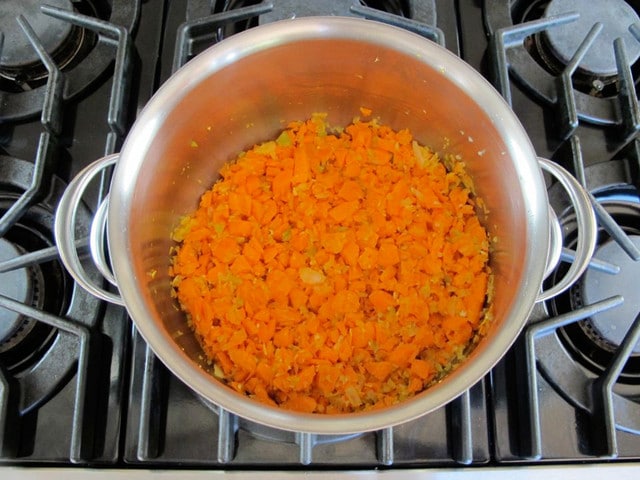 Coarsely chop potato and sweet potatoes. Add to soup pot along with water or broth, salt and pepper.
Coarsely chop potato and sweet potatoes. Add to soup pot along with water or broth, salt and pepper.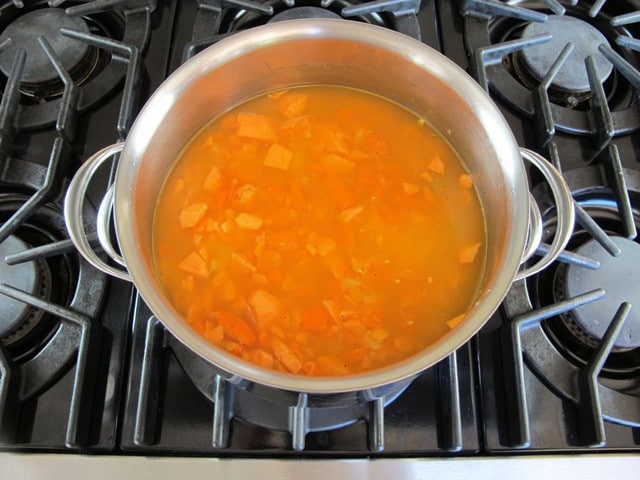 Bring to a boil, reduce heat and simmer, partially covered, for about 30 minutes, until vegetables are tender.
Bring to a boil, reduce heat and simmer, partially covered, for about 30 minutes, until vegetables are tender. Process basil and dill until minced, about 10 seconds. Reserve.
Process basil and dill until minced, about 10 seconds. Reserve.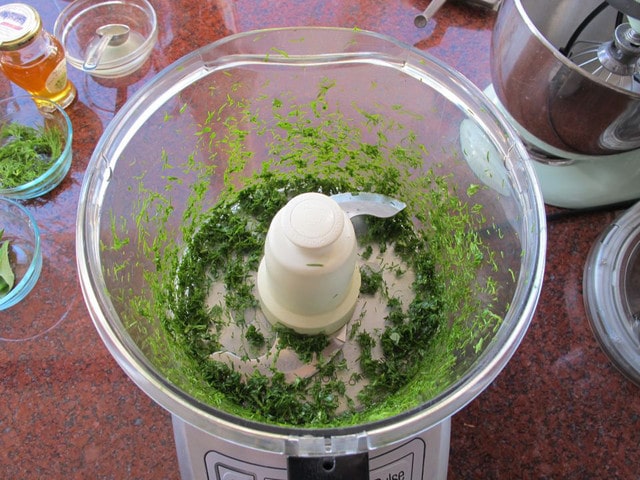 When the vegetables are nice and tender, puree the soup. Because of the quantity, it is easiest to use an immersion blender and puree the soup directly in the pot.
When the vegetables are nice and tender, puree the soup. Because of the quantity, it is easiest to use an immersion blender and puree the soup directly in the pot.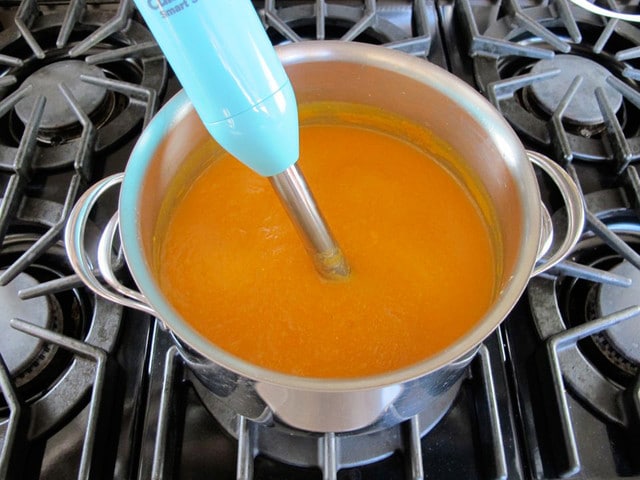 Alternatively, to puree soup in processor, place a strainer over a large bowl or saucepan. Strain soup, reserve cooking liquid. Puree solids on the steel blade attachment until smooth, working in batches if necessary. Stir pureed vegetables into the reserved cooking liquid.
Alternatively, to puree soup in processor, place a strainer over a large bowl or saucepan. Strain soup, reserve cooking liquid. Puree solids on the steel blade attachment until smooth, working in batches if necessary. Stir pureed vegetables into the reserved cooking liquid. Add minced basil, dill, lemon juice and honey to the soup (I used the immersion blender to blend them into the puree). Season with salt and pepper to taste. Add additional water if the soup is too thick.
Add minced basil, dill, lemon juice and honey to the soup (I used the immersion blender to blend them into the puree). Season with salt and pepper to taste. Add additional water if the soup is too thick. 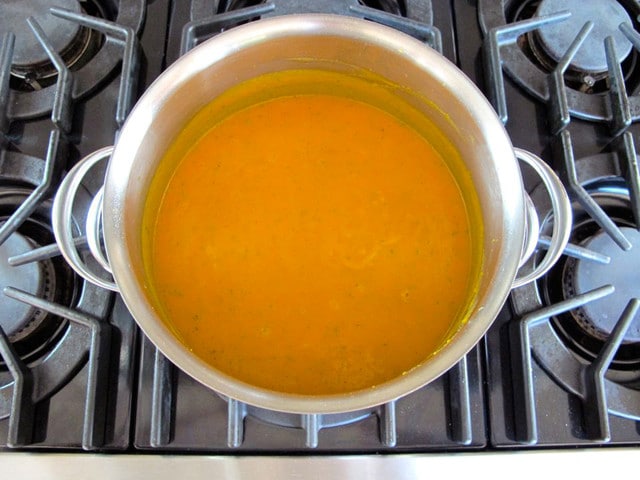 Serve hot. Garnish with a sprig of fresh dill, if desired. Keeps 3 days in the refrigerator. Reheats and/or freezes well.
Serve hot. Garnish with a sprig of fresh dill, if desired. Keeps 3 days in the refrigerator. Reheats and/or freezes well. Some people are Googling rockstars. No matter what you want to find out, they can pull it up in a search result. Even though Google wants to make searching easy, there are tips and tricks to becoming an absolute pro at search. The company has a program called "Power Searching", which is a series of online tutorials and classes to teach you how to be the best searcher ever. The last time this program was run was a few months ago, and it was apparently a success because Google is starting it up again.
Some people are Googling rockstars. No matter what you want to find out, they can pull it up in a search result. Even though Google wants to make searching easy, there are tips and tricks to becoming an absolute pro at search. The company has a program called "Power Searching", which is a series of online tutorials and classes to teach you how to be the best searcher ever. The last time this program was run was a few months ago, and it was apparently a success because Google is starting it up again.